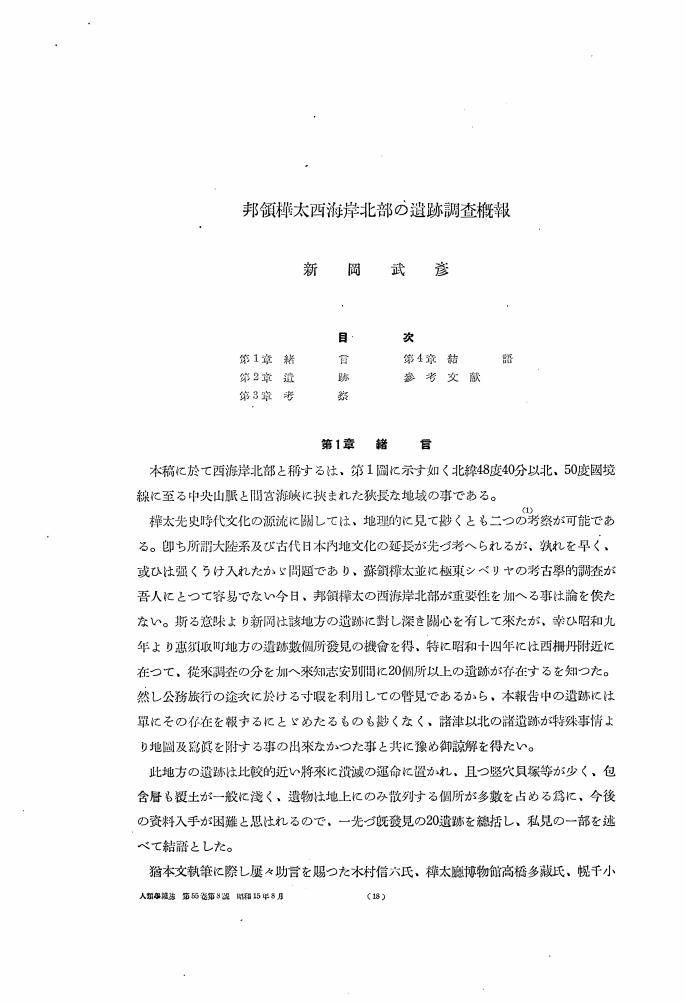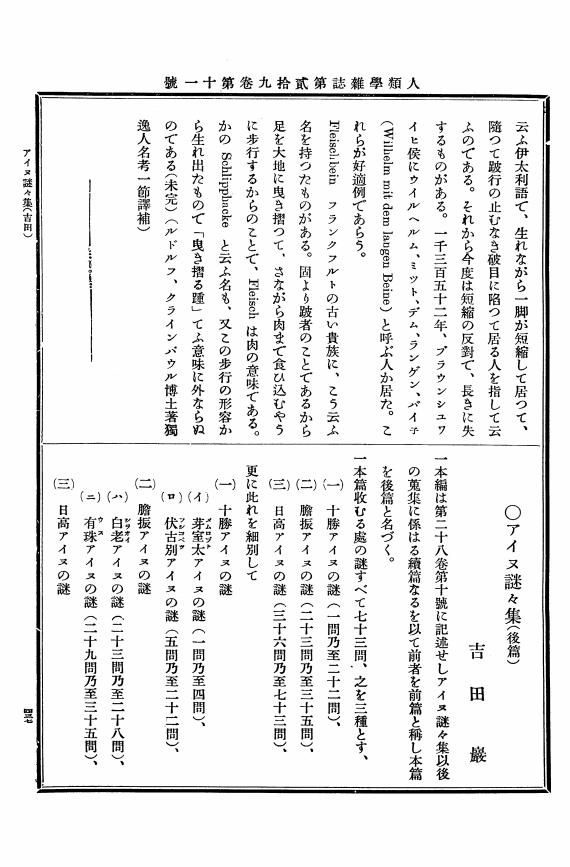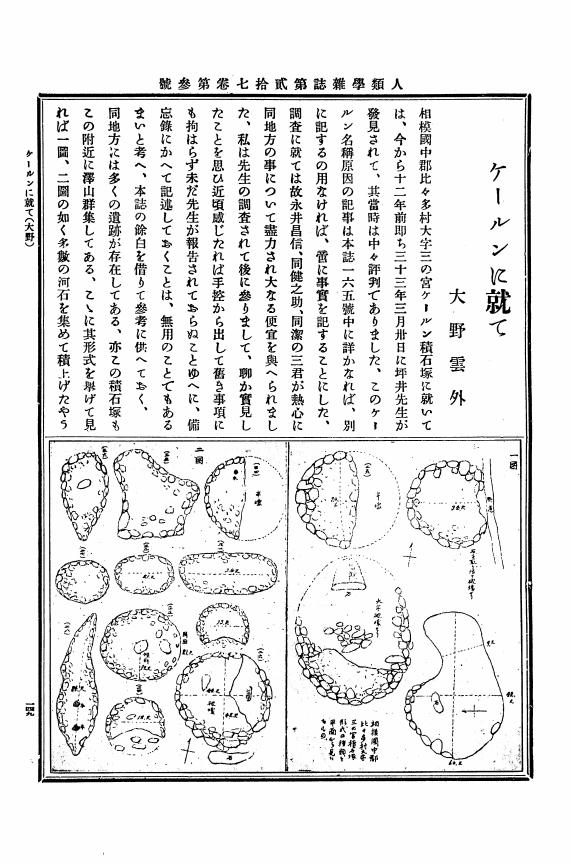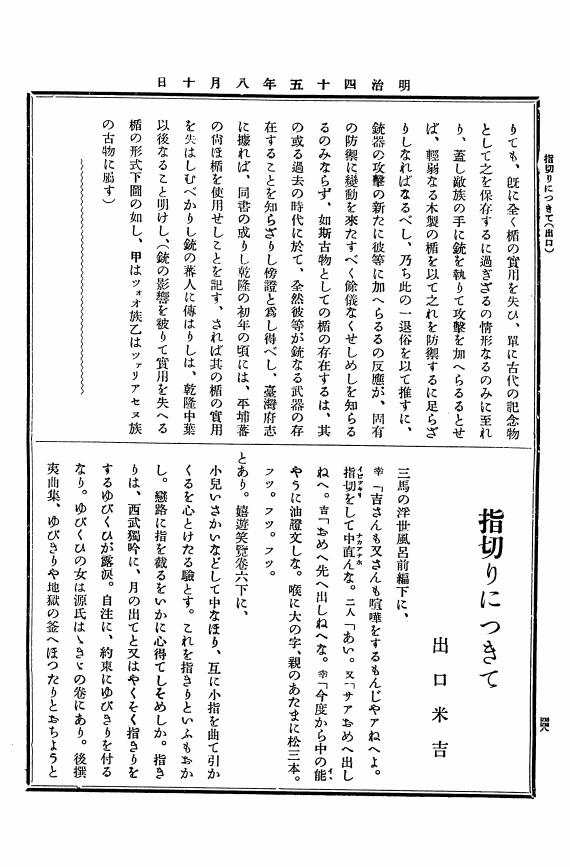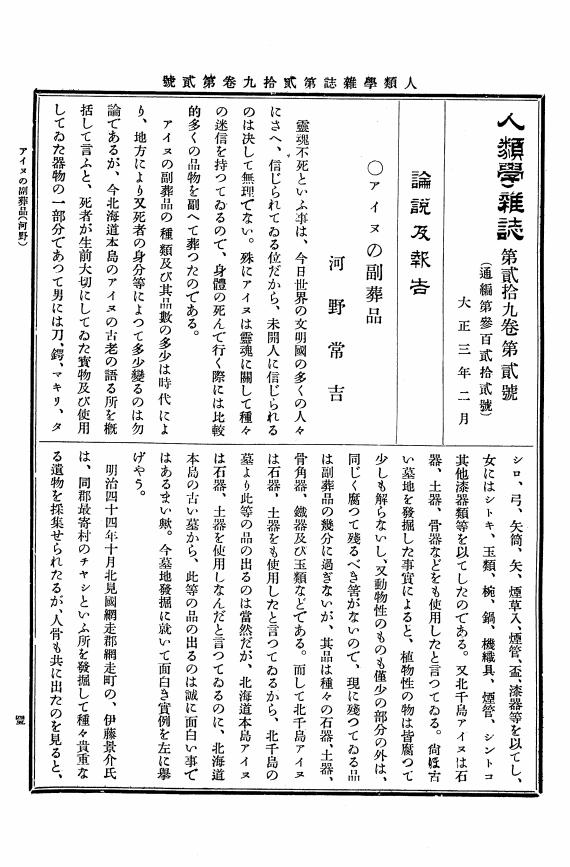1 0 0 0 OA 頭髪横断面にみられる年令差と性差について
- 著者
- 生駒 栄喜 津本 定男 前坊 毅 竹田 純子
- 出版者
- The Anthropological Society of Nippon
- 雑誌
- 人類學雜誌 (ISSN:00035505)
- 巻号頁・発行日
- vol.75, no.5, pp.224-229, 1967 (Released:2008-02-26)
- 参考文献数
- 19
- 被引用文献数
- 2 3
Cross sections of parietal hair of 1024 males and 2046 females of various ages were measured. The maximum and minimum diameters of the hair shaft and the hair index were statistically studied in terms of age and sex.The maximum and minimum diameters in the cross section of the hair shaft were very variable depending upon age.In males, both diameters change with a rather linear relationship to age, while in females they show a rather smooth curve relationship. In infancy and childhood, the diameters in males are larger than those in females, but in adults, they are smaller in males than in females.In females, a diameter to age correlationship shows two phases at 13 and 48 years of age respectively.Except infancy, in both sexes, the hair index in the cross section of the hair shaft is almost constant irrespective of age.It seems that studies of parietal hair on the cross section shoud not be made without a careful consideration of age and sex.
1 0 0 0 OA 爪の形態學的研究
- 著者
- 松田 健史 秋山 和也
- 出版者
- The Anthropological Society of Nippon
- 雑誌
- 人類學雜誌 (ISSN:00035505)
- 巻号頁・発行日
- vol.68, no.4, pp.182-195, 1961-02-20 (Released:2008-02-26)
- 参考文献数
- 5
The following are the summary of our study on finger nails of 195 youth (112 male and 83 female students). The classification of the nail type is based on that of MARTIN-SALLrx, in which nails are classified into 11 types. In the present study each of the 11 types is further subdivided into 2 sub-types, hence 22 types in all.1. Concerning the frequency of each finger nail type, Type II and Type II' appear with over 40% incidence on both sides of the first finger, but other types are of only less than 5% incidence. In the second finger, too, the Type II appears with over 40% incidence and type II-a in 20%. In the third finger, Type II and Type II-a' appear with about 20% incidence, but Type II is of 15% incidence which is less than half of that in the first or the second finger. In the fourth finger, Type II', Type II-a' and Type IV' appear with approximately 20% incidence, but Type II is reduced to 9 to 10%. In the fifth finger, Type II' appears in 3%, and Type I, Type II, Type II-a and Type II-a' appear in 10 to 15% respectively.As for the frequency of each nail types in females, Type II appears in 40 to 50%, Type II' in about 30% and Type I in 10% in the first finger. In the second finger, both type II and Type II-a appear in about 20% and Type I and Type II-a in about 10%. In the third finger, both Type II-a and the Type II-a' appear in 20%, and Type II in 15% and Type II' in 10%. In the fourth finger, Type II-a' appears in more than 30%, the type II' in 15%, Type I-a and Type Vin approximately 10%. In the fifth finger, Type II-a appears in 20% to 26%, Type I-a', Type II' and Type II-a in approximately 10% to 15%.2. There is no difference among each nail type of each finger on both sides in both males and females.3. There is no sexual difference among each nail type in the first finger. The nail types which appear significantly larger in males are Type II in the second finger, Type II' in the second, third and the fifth fingers and Type IV' in the third, fourth and the fifth fingers. In females, Type VII in the second finger, Type I-a in the second, third, fourth and the fifth fingers, Type II-a' in the fourth finger, Type I-a' in the fifth finger appear significantly more than in males.4. The incidence of nail types with concave-shaped covered margin is as low as about 5% in the first finger on both sides in both sexes, but is 30 to 40% in the second, third, fourth and the fifth fingers on both sides in the male and is as high as 56 to 76% in females. The sexual difference in covered nail margin is not existing in the first finger, but concave-shaped types appear significantly more in the second, third, fourth and fifth fingers of females. On the contrary, the straight covered margin appear significantly more in the second, fourth and the fifth fingers on both sides in males.5. The nail type in which free margin does not exceed the finger tip appears in 30% on both sides in the second finger, and in more than 50% in other four fingers in males. Among females, it appears in lower percentage of about 20% in the second finger, but in more than 50% in the first, third and fifth fingers, and in more than 70% in the fourth finger. Therefore, in both sexes, the type of the nail extending to the tip of the finger is more common in the second finger, whereas, in the fourth finger, the type of the nail which does not extend to the tip of the finger is more common.
1 0 0 0 OA 近世アイヌにおける前歯の抜歯
- 著者
- 井上 直彦 幸地 省子
- 出版者
- The Anthropological Society of Nippon
- 雑誌
- 人類學雜誌 (ISSN:00035505)
- 巻号頁・発行日
- vol.95, no.3, pp.305-324, 1987 (Released:2008-02-26)
- 参考文献数
- 38
- 被引用文献数
- 1
東京大学総合研究資料館の近世アイヌの頭蓋標本を観察したところ,125例中19例に,いわゆる風習によると思われる抜歯痕が見られた。抜歯された歯は主として上下顎の中切歯および側切歯で,その数は,上顎22本,下顎25本であった。地域別に見ると,北海道の太平洋岸では49例中8例,16.3%,日本海岸では30例中2例,6.7%,オホーツク海岸では34例中7例,20.6%で,全体では15.2%であった。とくに興味深いのは,抜歯が中切歯と側切歯に集中していたことで,これは,北海道の繩文時代人とも,本州以南の繩文および弥生時代人とも異なる様式であり,近世アイヌが,いわゆる北方文化の強い影響を受けていたことを示すもののように思われた。
1 0 0 0 OA 壹灣本島人女子の指紋
- 著者
- 須田 昭義
- 出版者
- 一般社団法人 日本人類学会
- 雑誌
- 人類學雜誌 (ISSN:00035505)
- 巻号頁・発行日
- vol.47, no.6, pp.193-205, 1932-06-15 (Released:2010-06-28)
- 参考文献数
- 4
1 0 0 0 OA 下總鬼高遺跡調査概報 杭上住居の疑ある遺跡
- 著者
- 杉原 荘介 佐藤 吉彦
- 出版者
- 一般社団法人 日本人類学会
- 雑誌
- 人類學雜誌 (ISSN:00035505)
- 巻号頁・発行日
- vol.53, no.11, pp.532-548, 1938-11-25 (Released:2008-02-26)
1 0 0 0 OA 相対重量値からみた類人猿の下肢筋構成について
- 著者
- 石田 英実
- 出版者
- The Anthropological Society of Nippon
- 雑誌
- 人類學雜誌 (ISSN:00035505)
- 巻号頁・発行日
- vol.80, no.2, pp.125-142, 1972 (Released:2008-02-26)
- 参考文献数
- 36
- 被引用文献数
- 15 15
霊長類の下肢の筋構成とロコモーション様式とが密接な関係をもつ点に着目し,ブラキエーションという特異なロコモーション様式をもつ類人猿の下肢の筋構成を明らかにし,その Hominization の過程における意義を検討するため,10種77頭の霊長類の下肢筋相対重量値を比較した.その結果,一関節筋が大きく,二関節筋が小さいヒト,その逆のニホンザルの筋構成が,それぞれの下肢筋の推進および支持機能とよく対応すること,ブラキエーターである類人猿の下肢の筋構成は四足歩行型のニホンザルとははっきり異り,二足歩行型のヒトに近いことが明らかとなった.
1 0 0 0 OA 邦領樺太西海岸北部の遺跡調査概報
- 著者
- 新岡 武彦
- 出版者
- 一般社団法人 日本人類学会
- 雑誌
- 人類學雜誌 (ISSN:00035505)
- 巻号頁・発行日
- vol.55, no.8, pp.370-389, 1940 (Released:2010-06-28)
- 参考文献数
- 17
1 0 0 0 OA アイヌ謎々集 (後篇)
- 著者
- 吉田 巖
- 出版者
- 一般社団法人 日本人類学会
- 雑誌
- 人類學雜誌 (ISSN:00035505)
- 巻号頁・発行日
- vol.29, no.11, pp.437-450, 1914-11-20 (Released:2010-06-28)
1 0 0 0 OA アイヌ謎々集
- 著者
- 吉田 巖
- 出版者
- 一般社団法人 日本人類学会
- 雑誌
- 人類學雜誌 (ISSN:00035505)
- 巻号頁・発行日
- vol.28, no.10, pp.592-604, 1912-11-28 (Released:2010-06-28)
1 0 0 0 OA 皮下脂肪層の生長及びその分布型に関する小考
- 著者
- 近藤 四郎
- 出版者
- The Anthropological Society of Nippon
- 雑誌
- 人類學雜誌 (ISSN:00035505)
- 巻号頁・発行日
- vol.70, no.3-4, pp.175-188, 1963 (Released:2008-02-26)
- 参考文献数
- 46
In our country, very few studies on growth of the Japanese by means of measuring body composition have been performed. Up to the present time, most basic informations regarding growth pattern of physical characteristics have been obtained on the basis of traditional anthropometry. In spite of dealing with the living subjects, the chief method of anthropometry was to measure external dimensions of the skeletal frame. Frankly speaking, this method omits or neglects variation of inner dimensions of human body such as fat and musculature. The techniques of traditional anthropometry will be more useful if knowledges of inner dimensions of human body along with their relationship with external dimensions are added. In this respect, the present author thinks that recent rapid progress of the measurement of body composition or somatometry in foreign countries could be interpreted as extension of traditional anthropometry.These arguments are described in Section I along with an introduction to several methods concerned with prediction of total body fat.Section II deals with growth pattern of subcutaneous fat of the Fels children, covering 4.5 to 10.5 years of age. The author wishes to express his thanks to Dr. S. M. GARN for giving an opportunity to examine these data. Measurements were taken on anteroposterior roentgenograms of those lower legs, at the level of maximum breadth of calf. In medial fat breadth, there is no significant difference between mean values in each two-year-interval in each sex respectively, though girls have greater values than boys. Bone breadth of the lower leg, however, shows a consistent increase. On the other hand, muscle breadth shows significant decrease between 8.5 and 10.5 years of age in both sexes. This discrepancy may occur from simple linear measurement way in muscle breadth, because muscle and fat are themselves a volume. The present author is trying to obtain a new method to calculate muscle volume as accurate as possible. Also, it seems to be necessary to convert measurement values of fat breadth into a logarithmic scale, because this brings the distribution of the measurement values more nearly to Gaussian form. When this conversion is carried out, then the author intends to compare growth pattern of the Fels children with the Japanese children or the hydrids between the Americans and the Japanese. Contents of Section III are concerned with Steatopygia which frequently appears only in the women of Bushman and Hottentot. He discussed on several works by other investigators concerning relative fat patterning, hereditary factor of fat, adaptation of skin and rectal temperatures in the tropic and so on. However, he has not yet arrived at definite conclusion about the cause of the formation of Steatopygia.
1 0 0 0 OA 石鏃を射込まれた有珠10遺跡出土続縄文時代恵山文化期の人骨について
- 著者
- 松村 博文
- 出版者
- The Anthropological Society of Nippon
- 雑誌
- 人類學雜誌 (ISSN:00035505)
- 巻号頁・発行日
- vol.97, no.1, pp.129-132, 1989 (Released:2008-02-26)
- 参考文献数
- 13
- 被引用文献数
- 1 1
北海道伊達市の有珠10遺跡において続縄文時代恵山文化期に属する17号墓の散乱人骨のなかから,石鏃が射込まれている成人男性の大腿骨が検出された。CT画像による観察の結果,石鏃の先端が14mm におよんで大腿骨の骨頭内に射入されており,治癒した傾向は認められなかった。
1 0 0 0 OA 巨人関脇出羽ヶ嶽骨格の形態学的資料
- 著者
- 鈴木 尚 馬場 悠男 神谷 敏郎
- 出版者
- The Anthropological Society of Nippon
- 雑誌
- 人類學雜誌 (ISSN:00035505)
- 巻号頁・発行日
- vol.94, no.4, pp.441-468, 1986 (Released:2008-02-26)
- 参考文献数
- 2
元関脇出羽ヶ嶽の全身骨格に関する形態学的資料を報告する.計測はマルチンの教科書に準拠して行ない,結果を Table1~11にまとめた.写真はマイクロニッコール55mm で撮影し, Plate1~6にまとめた. X線写真は距離1.2mで撮影し,直焼像を Plate7~14にまとめた.X 線写真のスケールは骨自体の人きさではなく,フィルム面上の像の大きさを表わしている.骨格の形態学的記載および現代日本人との比較は,この資料報告に先行する本報告(巨人関脇出羽ヶ嶽骨格の形態学的研究,鈴木他1986)に載せた.
1 0 0 0 OA ケールンに就て
- 著者
- 大野 雲外
- 出版者
- 一般社団法人 日本人類学会
- 雑誌
- 人類學雜誌 (ISSN:00035505)
- 巻号頁・発行日
- vol.27, no.3, pp.149-153, 1911-06-20 (Released:2010-06-28)
1 0 0 0 OA 匈奴の祭祀
- 著者
- 江上 波夫
- 出版者
- 一般社団法人 日本人類学会
- 雑誌
- 人類學雜誌 (ISSN:00035505)
- 巻号頁・発行日
- vol.56, no.4, pp.187-217, 1941-04-25 (Released:2008-02-26)
1 0 0 0 OA 指切りにつきて
- 著者
- 出口 米吉
- 出版者
- 一般社団法人 日本人類学会
- 雑誌
- 人類學雜誌 (ISSN:00035505)
- 巻号頁・発行日
- vol.28, no.8, pp.448-456, 1912-08-10 (Released:2010-06-28)
1 0 0 0 OA 世界一周雜記
- 著者
- 坪井 正五郎
- 出版者
- 一般社団法人 日本人類学会
- 雑誌
- 人類學雜誌 (ISSN:00035505)
- 巻号頁・発行日
- vol.27, no.6, pp.343-351, 1911-09-10 (Released:2010-06-28)
1 0 0 0 OA 北海道洲崎館発見の一中世頭骨
- 著者
- 百々 幸雄 松崎 水穂
- 出版者
- The Anthropological Society of Nippon
- 雑誌
- 人類學雜誌 (ISSN:00035505)
- 巻号頁・発行日
- vol.90, no.1, pp.73-78, 1982 (Released:2008-02-26)
- 参考文献数
- 17
北海道上ノ国町洲崎館跡より15世紀中葉の珠洲焼系の擂鉢を被って発見された成年男性頭骨は,形質人類学上,和人頭骨とみなすことができる。顔面部には現代的な特徴も見受けられるが,脳頭腎の著しい長頭性や鼻根部の扁平性は,中世的な特徴を表わしていると思われる。
1 0 0 0 OA アイヌの副葬品
- 著者
- 河野 常吉
- 出版者
- 一般社団法人 日本人類学会
- 雑誌
- 人類學雜誌 (ISSN:00035505)
- 巻号頁・発行日
- vol.29, no.2, pp.45-47, 1914-02-20 (Released:2010-06-28)
1 0 0 0 OA 下総我孫子町子ノ神の古墳
- 著者
- 柴田 常恵
- 出版者
- 一般社団法人 日本人類学会
- 雑誌
- 人類學雜誌 (ISSN:00035505)
- 巻号頁・発行日
- vol.28, no.3, pp.145-150_2, 1912-03-10 (Released:2010-06-28)
1 0 0 0 OA 宮城県の旧石器及び「前期旧石器」時代研究批判
- 著者
- 小田 静夫 Charles T. KEALLY
- 出版者
- The Anthropological Society of Nippon
- 雑誌
- 人類學雜誌 (ISSN:00035505)
- 巻号頁・発行日
- vol.94, no.3, pp.325-361, 1986 (Released:2008-02-26)
- 参考文献数
- 66
- 被引用文献数
- 1 4
日本の旧石器時代の研究において,一つの関心事は日本列島に最初に渡来した人類の問題であろう.現在多数の研究者は1万-3万年前頃の旧石器時代人類の存在は認めているが,3万年以前に遡るとされる所謂「前期旧石器時代」になると,その存在に賛否両論があり現在未解決の問題として残されている.日本の前期旧石器時代については,1969年頃から芹沢長介により本格的に研究され始め,全国に遺跡,遺物の発見があった.しかし,ここ数年,岡村道雄•鎌田俊昭らが宮城県内で推進している「新たな前期旧石器時代」の提唱は,芹沢により研究されてきた本来の「前期旧石器問題」を解決させることなく,これこそ真の石器であり,遺跡も完壁なものであると力説する.現在宮城県内で33ヵ所の前期旧石器時代遺跡が発見されており,その中でも座散乱木,馬場壇A,志引,中峯C,北前,山田上ノ台遺跡等が有名である.


